The echoes of Columbine: A timeline of school massacres and foiled plots
Columbine "defined the social category of a rampage school shooting." And it continues to inspire a troublingly large number of copycats.


Nearly 15 years ago, Eric Harris and Dylan Klebold carried out a highly orchestrated massacre at their high school in Columbine, Colo. Using military-grade artillery and homemade bombs, the teenagers killed 13 people and injured more than 20 others before turning the guns on themselves.
It was a horrible, watershed moment in U.S. history, and the terrifying incident became a benchmark for both future tragedies and would-be copycats. "It's the iconic shooting," Princeton University professor Katherine S. Newman told NBC News. "It defined the social category of a rampage school shooting."
The massacre was not the first of its kind and far from the last. Since 1999, many students (typically male and ostracized) have attempted to emulate the 1999 tragedy. But school authorities, parents, and students have also grown attuned to the warning signs of the potentially unhinged, often helping to lead police to threats before they are acted upon. While hundreds of innocent lives have been lost in school shootings, many have also been saved because of that vigilance.
The Week
Escape your echo chamber. Get the facts behind the news, plus analysis from multiple perspectives.

Sign up for The Week's Free Newsletters
From our morning news briefing to a weekly Good News Newsletter, get the best of The Week delivered directly to your inbox.
From our morning news briefing to a weekly Good News Newsletter, get the best of The Week delivered directly to your inbox.
Here, a look at the most egregious threats and Columbine-style close calls, as well as some of the most alarming massacres to occur since April 20, 1999.
May 20, 1999
It was the last day of classes for seniors at Heritage High School in suburban Atlanta, just one month after the devastating Columbine shooting. Moments before the start of classes, sophomore T.J. Solomon walked into one of the school's common areas with a sawed-off .22-caliber rifle and opened fire. The bullets struck six students, all of whom survived, and Solomon was reportedly disarmed by the assistant principal and apprehended. The shooter, then 15, was tried as an adult, though his sentence was eventually reduced to 40 years in prison. Handwritten notes found under the teenager's bed reportedly referred to the Columbine High School group, the so-called Trench Coat Mafia.
February 1, 2000
A free daily email with the biggest news stories of the day – and the best features from TheWeek.com
Derik Lehman, a sophomore at the Royal Palm Beach High School in Florida, reportedly told three of his friends that he thought it would be easy to replicate the Columbine shooting. Then on Feb. 1 he told those same three friends to stay away from a particular building on the school's campus. The students and one of their parents reported the plot to the principal the next morning. School police reportedly arrested the 17-year-old at his home, where they found a diary, a floor plan of the school with written notes of where he wanted to attack, and bomb-making directions taken from the internet. Lehman was sentenced to five years' probation after pleading guilty to the only charge he faced — solicitation to shoot into a building.
March 5, 2001
Andy Williams, 15, was known as a good Christian boy whose parents were divorced when he moved from Maryland to Santee, Calif., in 1999. But soon he fell into a troubled social group that treated the Columbine shooting as the stuff of legend. When Williams stole one of his dad's guns and hid it in a local park, Williams' buddy bragged to others about it. One weekend in March 2001, Williams allegedly began saying he would "pull a Columbine" at Santana High School. His two friends egged him on, reportedly calling him names and daring him to go through with it. The following Monday, at 9:20 a.m., Williams went to the boys bathroom, pulled out a hidden .22 revolver, and opened fire in the restroom before heading into an adjacent courtyard. Within six minutes, he killed two students and wounded 13 more. Cornered by the police, Williams handed over his weapon and was arrested. He is serving a 50-years-to-life sentence in California's Ironwood State Prison.
November 2001
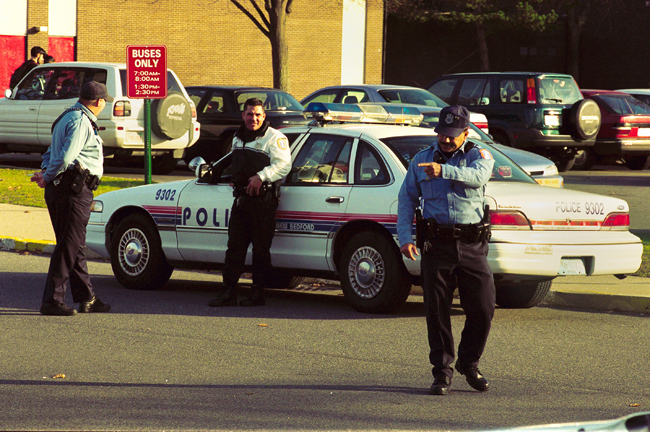
Massachusetts police were already investigating an alleged Columbine-like plot in October 2001 when, a month later, a janitor at the New Bedford High School found a suspicious letter. The note allegedly outlined detailed plans to detonate explosives, shoot fleeing students, and commit suicide when the police arrived. Its authors called their attack "bigger than Columbine." Police arrested 17-year-old Eric McKeehan and two other unnamed juveniles after seizing bomb-making instructions, knives, shotgun shells, and pictures of the suspects holding what appeared to be handguns. The three faced several charges including conspiracy to commit murder. A student who used to hang out with McKeehan said the teen joked about "how cool it would be to pretend to blow up the school." His friends said they believed he was joking. According to at least one source, McKeehan's case has still yet to be tried.
July 7, 2003
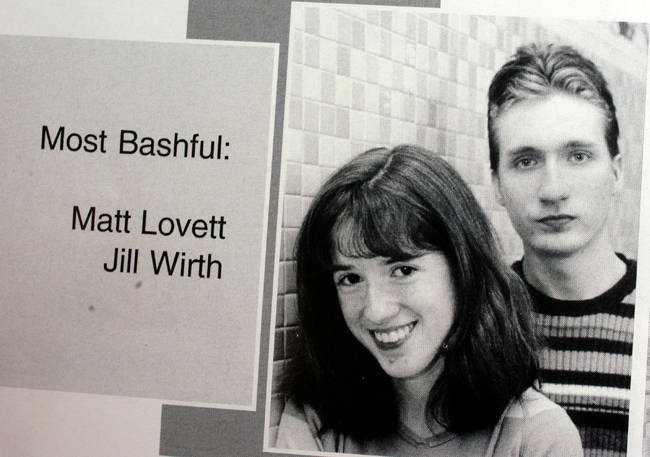
In the wee hours of July 7 in the sleepy, working-class town of Oaklyn, N.J., 18-year-old Matthew Lovett and two younger teenagers set their night of terror into motion. Armed with rifles, shotguns, handguns, swords, machetes, and 2,000 rounds of ammunition, the teens first attempted to hijack a car that they would use to hunt down three classmates who reportedly bullied them, shooting anyone who got in their way. The driver of the car sped off before the teens could get ahold of his vehicle. The man alerted police who then tracked the teenagers down. Lovett, who was pinpointed as the leader of the group, said during his sentencing that after their failed carjacking attempt, the three had a change of heart. "We decided to go back home, back to my house. We realized we were in the wrong. We were just stupid." The judge wasn't particularly swayed and Lovett was held on $1 million bond. He was ultimately sentenced to 10 years in prison after pleading guilty to carjacking in return for dropped charges, including the more severe conspiracy to commit murder.
March 21, 2005
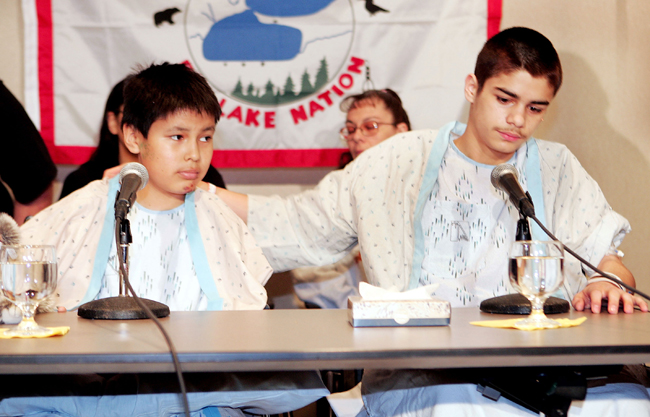
It was a Monday afternoon at the Indian reservation in Red Lake, a poor and remote area in northern Minnesota just 75 miles south of the Canadian border. Jeff Weise, 16, shot and killed his grandfather, a longtime member of the local police force, and his grandfather's girlfriend at their home. He then got in his grandfather's police car and, armed with a police-issued gun belt, bulletproof vest, two handguns, and a shotgun, drove to the local high school. At the entrance, he reportedly shot and killed two security guards before going on a rampage through the halls. Weise fatally shot five students and one teacher, seemingly at random, and then turned the gun on himself. At least 12 other students were wounded in the spree. Like previous school shooters, Weise was described by his classmates as anti-social and appeared to be fascinated by the ideology of famous killers, including Adolf Hitler. At the time of the massacre, Weise had been suspended from school.
December 2005
Investigators in Lancaster, Calif., got wind of a "Columbine-style assault" through a Quartz Hill High School student who said she had heard about the plan second-hand. Two teens who had recently been transferred out of the school for disciplinary reasons, had reportedly planned an attack on their alma mater where they would target students who had made fun of them. The suspects were arrested and the Los Angeles County Sheriff's Department searched the boys' homes, turning up knives, ammunition, a gas mask, and bomb-making instructions downloaded from the internet. Authorities also found a notebook belonging to the younger of the two, containing the message "When I'm God, everyone dies" as well as a three-ring binder with pictures of various convicted killers, including Columbine shooters Eric Harris and Dylan Klebold. The older of the two, Johnny Alverez Casas, pleaded no contest to lesser charges and was sentenced to five years in prison. The other teen was sentenced to confinement in the California Youth Authority for up to eight years.
April 20, 2006
On the seven-year anniversary of Columbine, five Kansas teenagers were arrested for allegedly orchestrating a similar shooting spree at their own small-town high school. The plan had reportedly been in motion since the beginning of the school year. The suspects, ranging in age from 16 to 18, intended to don black trench coats, disable the school's camera system, and then launch their assault between noon and 1 p.m. on April 20, which was also Hitler's birthday. But they were caught when one divulged the plot to a woman on MySpace who reported the conversation to the police. Authorities raided the homes of the teens and found guns, ammunition, knives, and coded messages in the bedroom of one of the suspects. All five teens were ultimately given reduced charges of one felony count each of incitement to riot and making a criminal threat. That same week, in a small town in Alaska, six middle schoolers where arrested on similar charges, which appear to have been dropped.
September 2006
Shawn Sturtz and William Cornell, both 17, had reportedly long been fascinated by the Columbine massacre. The two teens, who each weighed about 300 pounds, were allegedly relentlessly bullied. The torment had gotten to the point that Sturtz felt he needed protection at his Wisconsin high school. In 2005, he brought a knife to school, but when administrators found out, he was transferred to another school. Sturtz and Cornell then reportedly came up with a plan to exact revenge on their tormenters. The plot, which involved another student who had already graduated, allegedly entailed setting off bombs near the bathrooms, lighting the exits on fire, and shooting people they didn't like. They had been working on the plan for a number of years and were close to acting on it when an anonymous student alerted the associate principal. The three boys were arrested and investigators raided their homes finding nine rifles and shotguns, a handgun, 20 "crudely made" explosive devices, camouflage clothing, gas masks, two-way radios, and hundreds of rounds of ammunition. The teens struck a plea bargain for lesser charges, but all could face jail time. Cornell was ultimately sentenced to six years in prison.
April 16, 2007
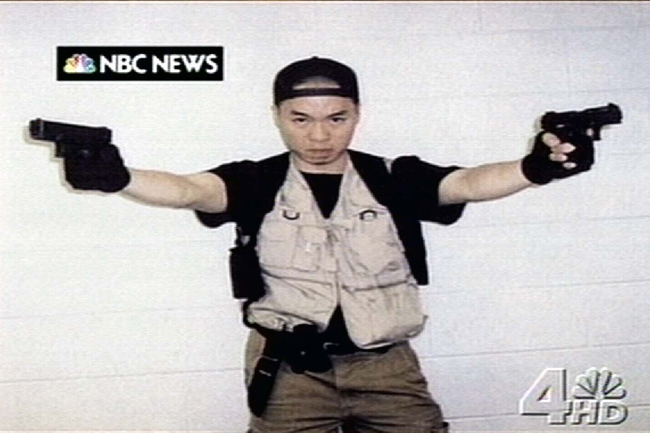
Around 7:15 a.m. on April 16, 23-year-old Seung-Hui Cho fatally shot two people in a dormitory on the Virginia Tech campus. More than two-and-a-half hours later, Cho continued his rampage in a science and engineering building across campus. The scenes as described by witnesses were horrific. Doors were chained shut so few could escape. Some students were lined up and shot execution style while others jumped out of windows, at least six of whom plummeted to their deaths. All told, 32 people were killed and 17 were injured before Cho shot himself as police approached. A video was later recovered in which Cho refers to "martyrs like Eric and Dylan." The Virginia Tech massacre remains the deadliest school shooting in American history.
February 14, 2008
Before entering a Northern Illinois University lecture on Valentine's Day 2008, Steve Kazmierczak sat in his car listening to a CD he made titled "Final CD." Beneath the 27-year-old's long black coat was a holster containing three pistols; inside a guitar case he carried was a Remington 12-gauge shotgun. At 3:06 p.m. Kazmierczak kicked open the door on the lecture hall's right side and made his way to the stage, interrupting the professor and stunning the class until the gunfire started. Within six minutes the room was silent and six people, including the gunman, were dead. Some 17 more were injured, six in critical condition. One witness said the assailant attacked with unnerving calmness. He "never yelled. He just came in, shot at us like we were cattle." Police would find 48 bullets and six shotgun shells. No clear motive was ever revealed, however, Kazmierczak was known to discuss school massacres like Columbine and Virginia Tech in detail. He would reportedly go over the "methodology" and appeared to admire the killers' system of torment — how Cho chained the doors to the building and how Harris and Klebold initially detonated a bomb far from the school to divert police.
April 2008
Ryan Schallenberger was one of the top students at Chesterfield High School in South Carolina. But beneath that studious exterior was a cache of hate — at the world, at his fellow students, at "the rich boys with good-looking girlfriends." The 18-year-old was allegedly plotting to release that dormant anger with homemade bombs that could kill dozens. But his plan came to an abrupt end in April 2008 after a package of ammonium nitrate — the same component used in the Oklahoma City bombing — failed to be delivered to his home. His parents received a notice from the Post Office and went straight to the police with the information. Schallenberger was arrested and a raid of his room revealed bombing plans, a hand-drawn map of the school, and journal in which the teen praised the Columbine killers. An audiotape was also found and authorities say Schallenberger intended it to be played after his death. While his writings didn't include a specific time for the attack or the intended targets, authorities said based on the materials he had, the massacre was imminent. "The only thing left was delivering the bombs," the police chief said. Schallenberger was sentenced to 10 years in prison.
August 2011
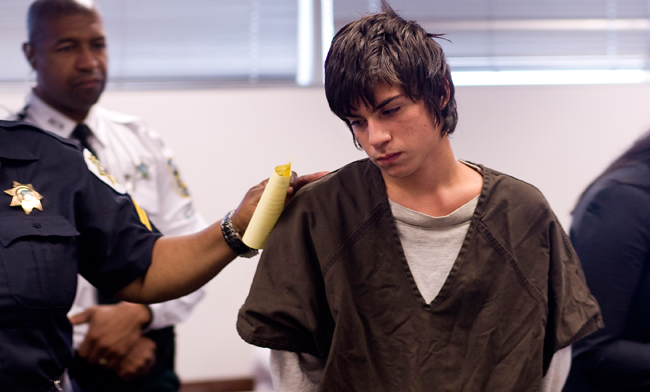
Jared Cano reportedly planned to bomb his Tampa, Fla., high school just as its 2,100 students would have streamed through the doors on the first day of school. Luckily, an anonymous tipster reported the alleged plan to the Tampa Police, who immediately called a bomb squad over to the teen's apartment. Police found all the makings of pipe bombs, including fuses, timers, shrapnel, accelerant, and plastic tubing. They also found a manifesto in which Cano detailed his minute-by-minute plan and named two administrators and 30 students he intended to kill. The teen wrote that his goal was to surpass the number of students killed during the Columbine massacre. "We were probably able to thwart a potentially catastrophic event the likes of which the city of Tampa has never seen," the Tampa police chief said. In 2012, Cano pleaded no contest and was sentenced to 15 years behind bars.
December 14, 2012
Adam Lanza, 20, killed his mother, Nancy, at their home in Newtown, Conn., before driving to his former elementary school. Tearing through two classrooms at Sandy Hook where kids as young as 5 and 6 were learning, Lanza killed 20 children and six adults before shooting himself. Investigations into Lanza's motives and mental state are still ongoing but the parallels to previous shootings are clear— a bullied loner who reportedly idolized previous shootings. Police are said to believe Lanza "aimed to be a glory killer whose massacre would rival that of other mass murders."
May 2013
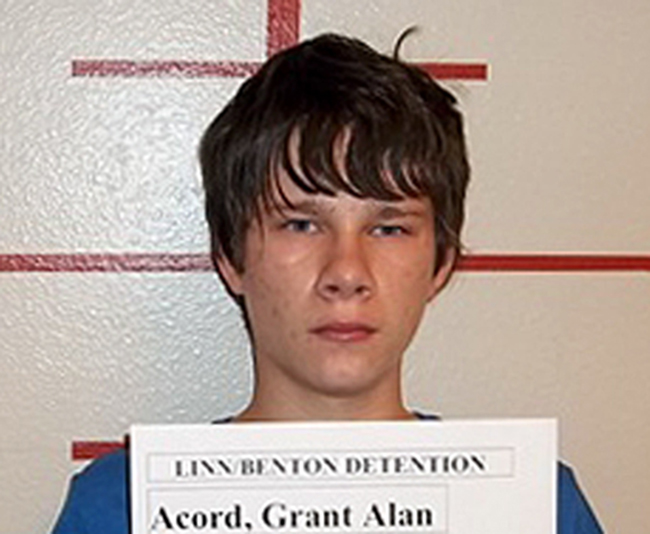
Working on a tip from an anonymous source, police arrested 17-year-old Grant Acord of Albany, Ore., on May 26. After raiding Acord's bedroom, authorities found a cocktail of lethal explosives including napalm, pipe bombs, and drain-cleaner bombs hidden beneath the floorboards. They also identified notebooks, one of which was called "The (Loosely Stated) 'Plan' AKA Worst case Scenario." The writings indicated that Acord idolized the Columbine shooters and attempted to appropriate their look and weaponry. The teen wrote that the plot would begin after first period when he would retreat to the parking lot to prepare. At about 11:10 he would blast music from the car and walk toward the school, napalm firebomb in one hand and a duffel bag in the other. The plan goes on to quote lines from the 2003 movie Bad Boys II and explain where he would throw the bombs and when he would kill himself. Acord was charged on May 28 as an adult with 19 counts, including attempted aggravated murder. His bail was set for $2 million. The county's district attorney said the attack could have happened at any time. "I can't say enough about how lucky we are that there was an intervention," he said. "I shudder to think what could have happened here."
Sources: ABC News, The Associated Press (2) (3) (4) (5), CNN (2) (3), Chicago Tribune, Daily News, Esquire, Fox News, Huffington Post, Green Bay Press Gazette, NBC News (2), The New York Times (2) People, Philadelphia Weekly, Sun Sentinel, TIME, USA Today (2), WSWS.org, WTSP.com
Lauren Hansen produces The Week’s podcasts and videos and edits the photo blog, Captured. She also manages the production of the magazine's iPad app. A graduate of Kenyon College and Northwestern University, she previously worked at the BBC and Frontline. She knows a thing or two about pretty pictures and cute puppies, both of which she tweets about @mylaurenhansen.
-
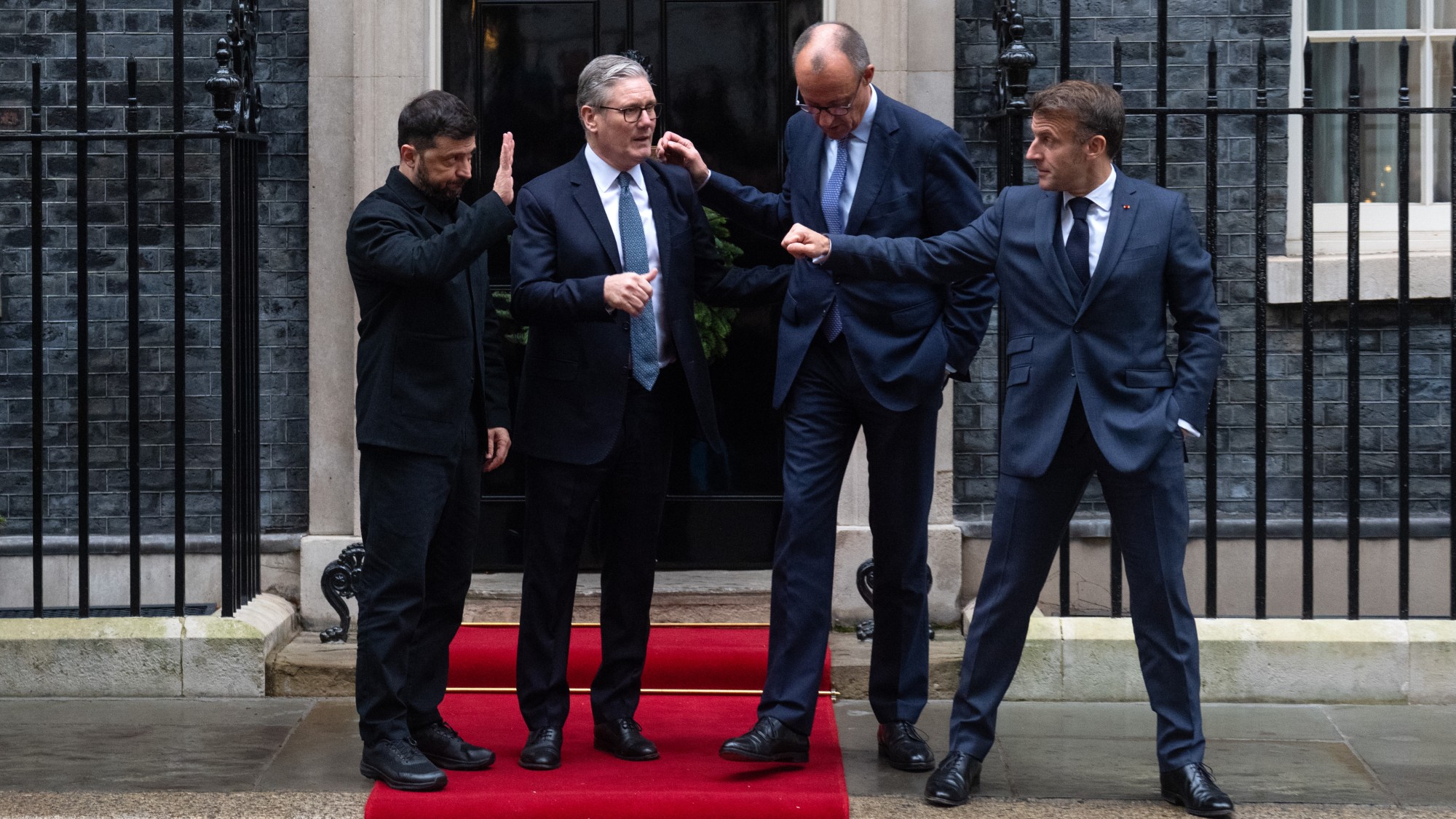 Will there be peace before Christmas in Ukraine?
Will there be peace before Christmas in Ukraine?Today's Big Question Discussions over the weekend could see a unified set of proposals from EU, UK and US to present to Moscow
-
 Quiz of The Week: 6 – 12 December
Quiz of The Week: 6 – 12 DecemberQuiz Have you been paying attention to The Week’s news?
-
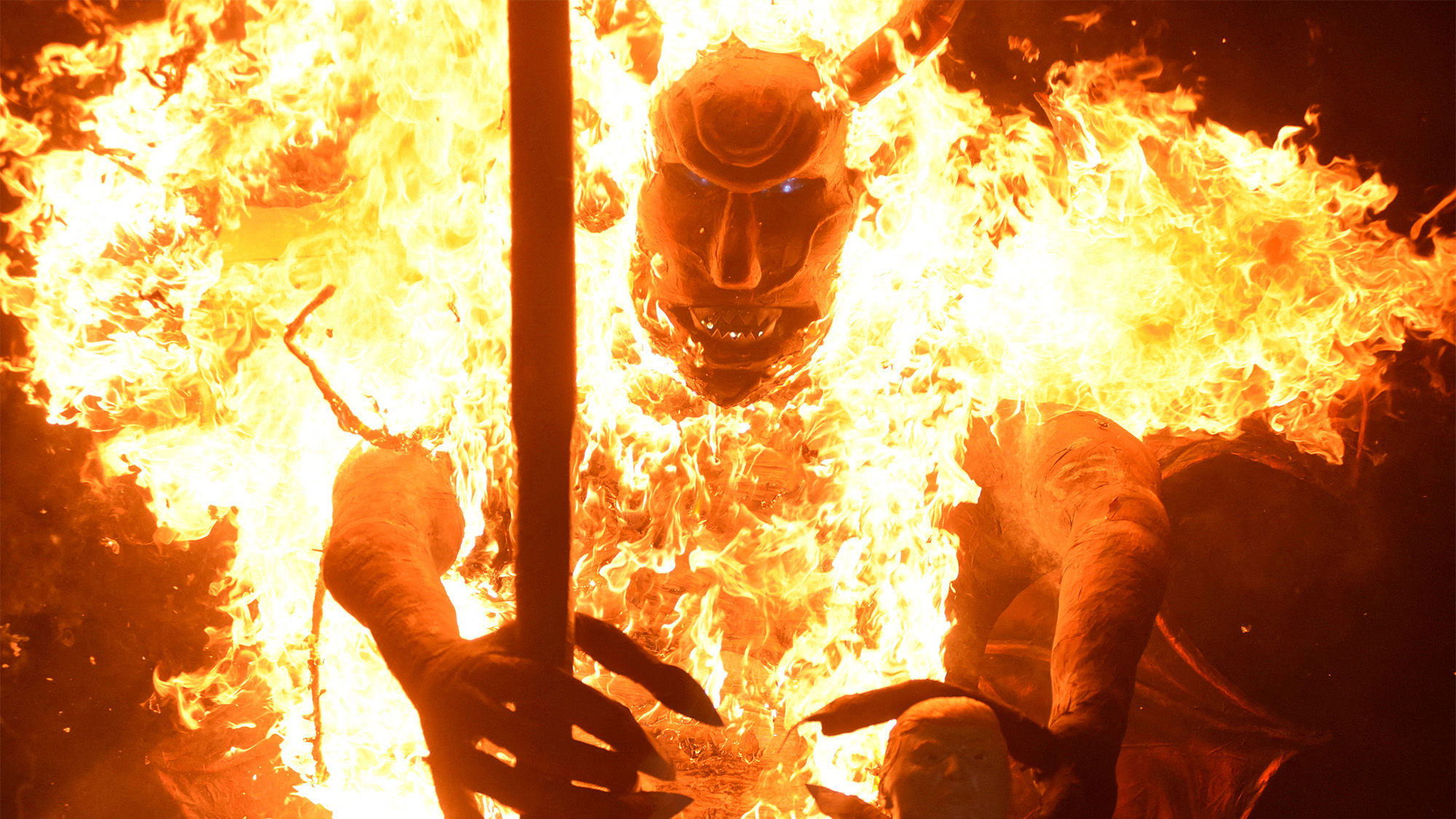 The week’s best photos
The week’s best photosIn Pictures A man's best friend, the elephants in the room, and more
